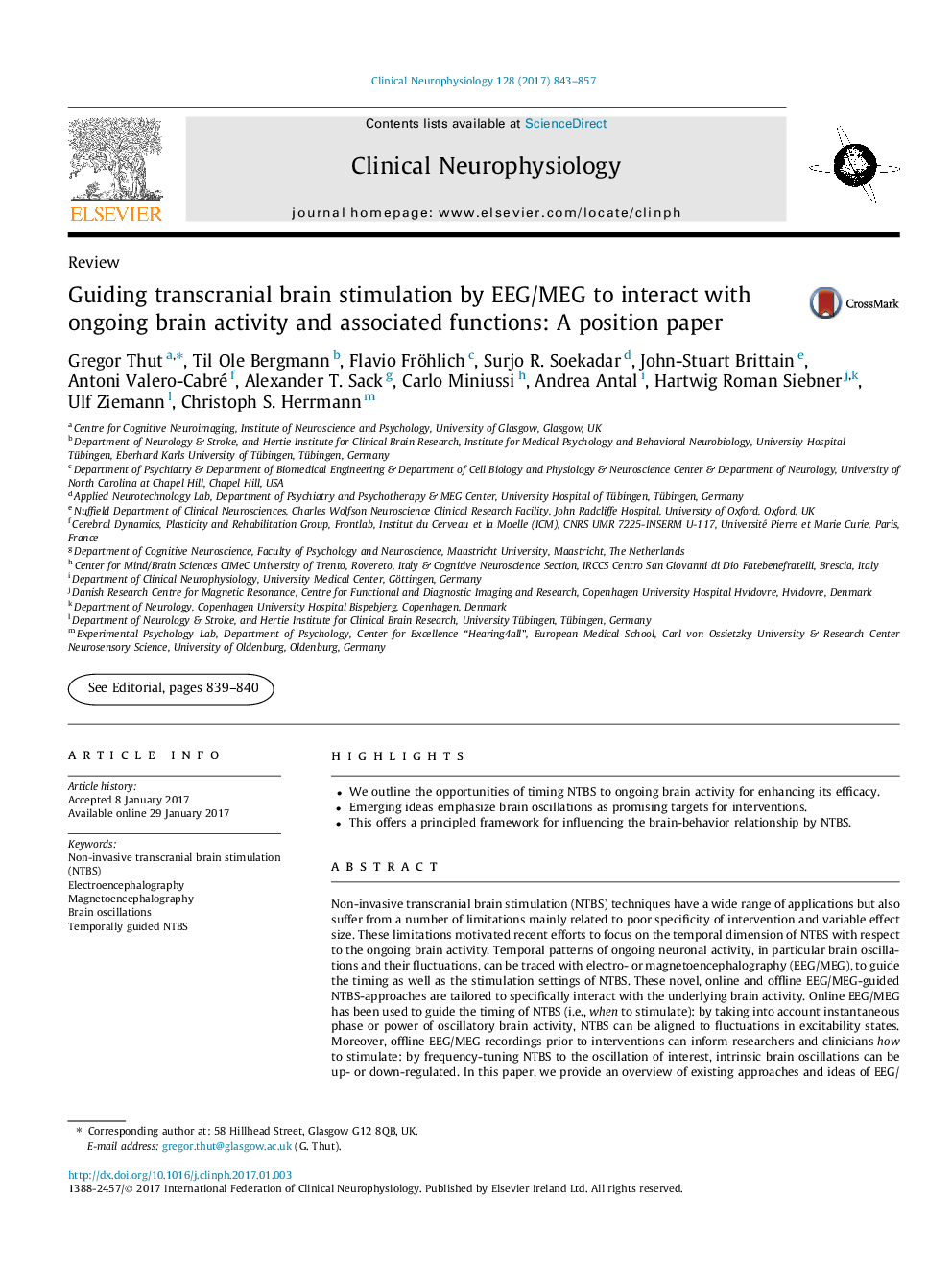| Article ID | Journal | Published Year | Pages | File Type |
|---|---|---|---|---|
| 5627663 | Clinical Neurophysiology | 2017 | 15 Pages |
â¢We outline the opportunities of timing NTBS to ongoing brain activity for enhancing its efficacy.â¢Emerging ideas emphasize brain oscillations as promising targets for interventions.â¢This offers a principled framework for influencing the brain-behavior relationship by NTBS.
Non-invasive transcranial brain stimulation (NTBS) techniques have a wide range of applications but also suffer from a number of limitations mainly related to poor specificity of intervention and variable effect size. These limitations motivated recent efforts to focus on the temporal dimension of NTBS with respect to the ongoing brain activity. Temporal patterns of ongoing neuronal activity, in particular brain oscillations and their fluctuations, can be traced with electro- or magnetoencephalography (EEG/MEG), to guide the timing as well as the stimulation settings of NTBS. These novel, online and offline EEG/MEG-guided NTBS-approaches are tailored to specifically interact with the underlying brain activity. Online EEG/MEG has been used to guide the timing of NTBS (i.e., when to stimulate): by taking into account instantaneous phase or power of oscillatory brain activity, NTBS can be aligned to fluctuations in excitability states. Moreover, offline EEG/MEG recordings prior to interventions can inform researchers and clinicians how to stimulate: by frequency-tuning NTBS to the oscillation of interest, intrinsic brain oscillations can be up- or down-regulated. In this paper, we provide an overview of existing approaches and ideas of EEG/MEG-guided interventions, and their promises and caveats. We point out potential future lines of research to address challenges.
